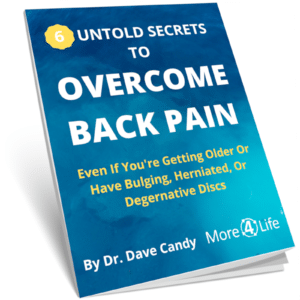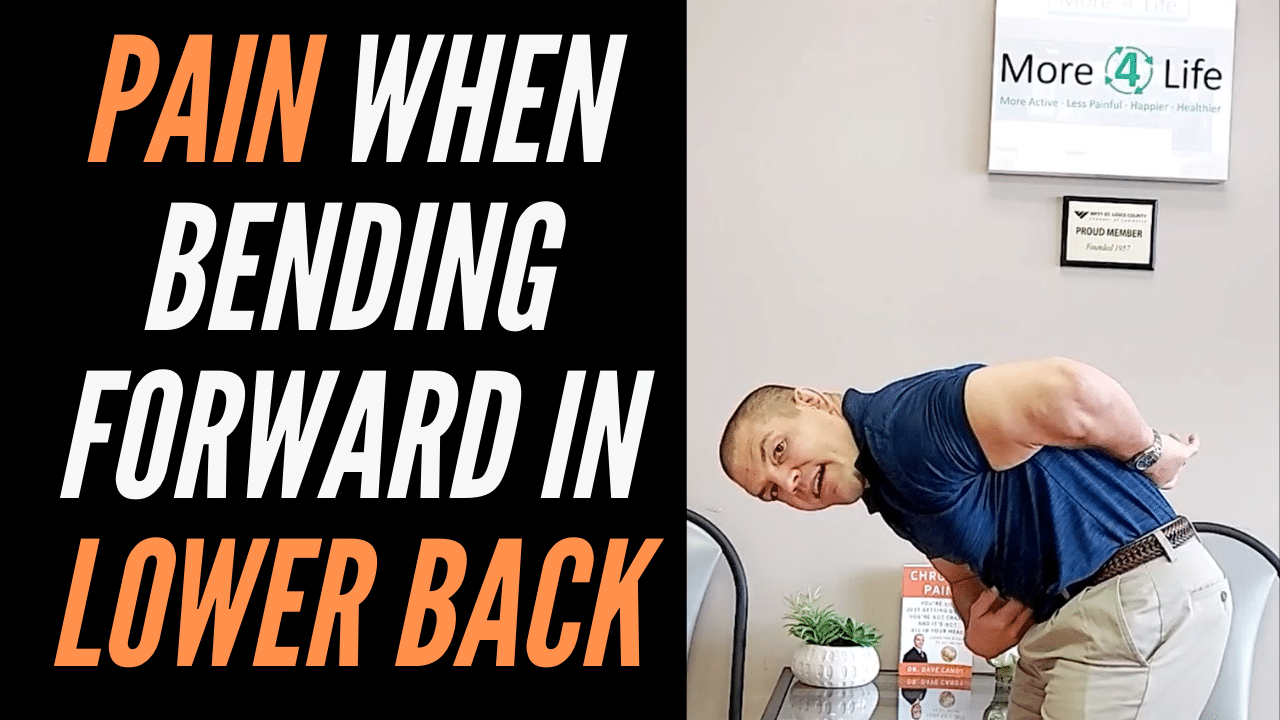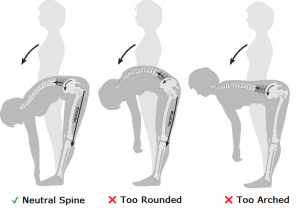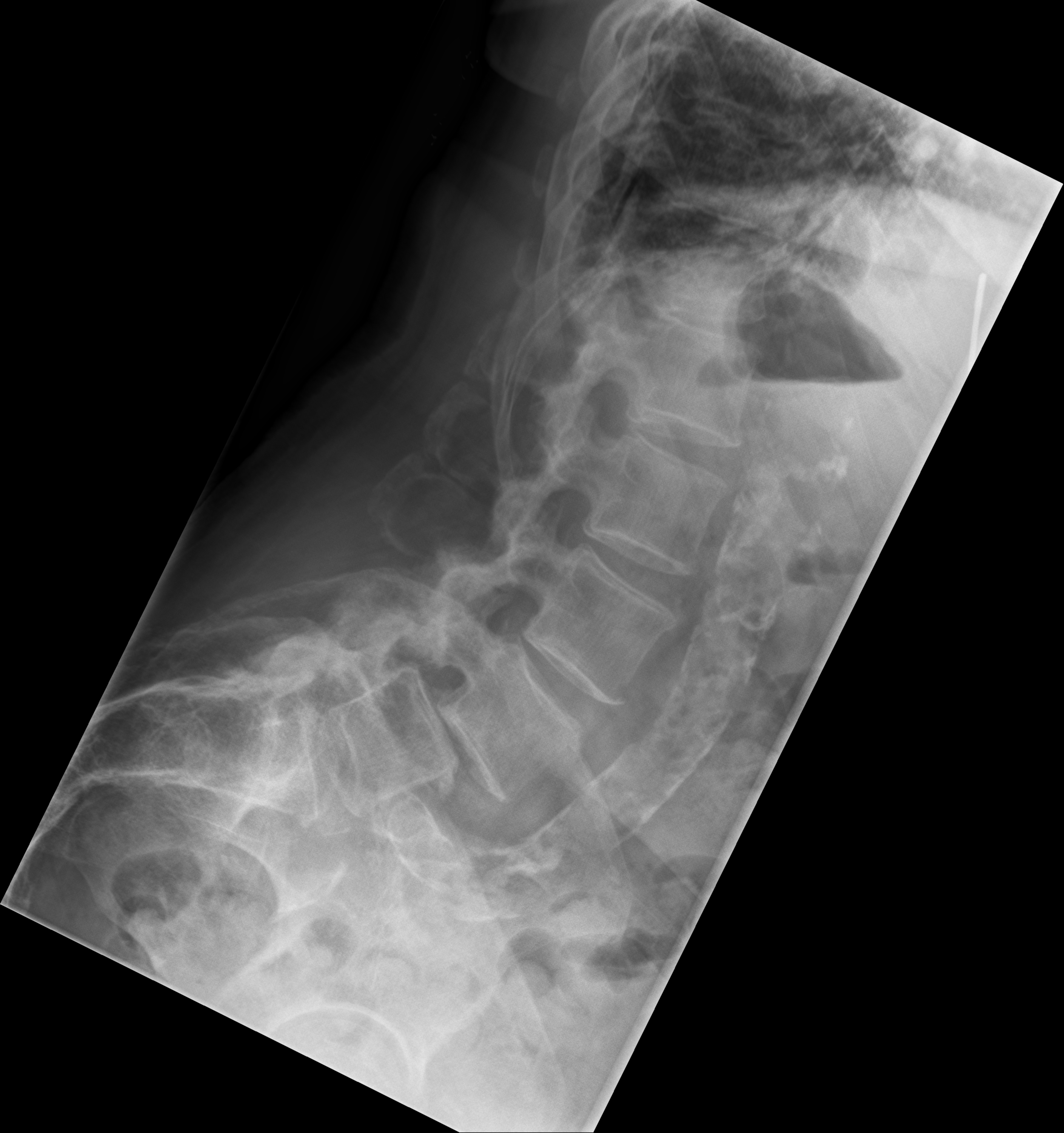Do You Get Pain When Bending Forward In Your Lower Back?
Watch the video below to learn what causes lower back pain while bending forward and how you can bend forward safely without lower back pain.

"Why Does My Lower Back Hurt When Bending Forward?"
Many people suffer from lower back pain while bending forward, especially if they have to stay in a forward bent position for a long period of time.
Because of this, many people avoid bending forward for fear of making their lower back pain worse.
However, your lower back was designed to be able to bend forward, and bending is healthy for your lower back.
What Causes Pain When Bending Forward In The Lower Back?
It used to be common thought that pain when bending forward in the lower back was caused by bulging or herniated discs.
There are some older studies that show that bending puts the lower back discs at greater risk for injury. This has led to a number of commonly held misbeliefs that bending is bad for your lower back and can lead to further back pain.
However, newer data show that there are a number of contributing factors to the forces on the spine when bending and lifting, only one of which is the pressure on the discs.
Some of these include:
-
Back muscle forces
-
Joint compression
-
Disc pressure
-
Speed and duration of movement
-
Weight of the object you're lifting
For the purposes, of this post, we're just going to consider the act of bending on lower back pain, not lifting.
Click here for more information on preventing lower back pain when lifting.
Position Of The Lower Back When Bending Forward
There are many different strategies you can use to bend forward:
-
Rounding the lower back
-
Keeping the lower back arched
-
Keeping the lower back neutral
Rounding the lower back while bending forward CAN in fact increase pressure on the discs, especially if you're staying in that position a long time or lifting something heavy with a rounded lower back.
Keeping the lower back arched protects the discs to some extent, but it increases the muscle tension in your lower back muscles, increases pressure on the lower back facet joints, and increases the overall compressive force on the spine. This can lead to pain when bending forward in the lower back muscles. Keeping your back too arched when bending forward also can lead to one of the lower back vertebrae slipping forward as shown at L4-L5 in the x-ray below.
Case courtesy of Dr Henry Knipe, Radiopaedia.org. From the case rID: 39102
Finally, keeping the lower back neutral - not too rounded and not to arched - minimizes the muscle force needed when bending forward as well as the pressure on the lower back joints and discs. As with most things in life, usually the happy medium is better than either extreme.
How You Bend You Bend Forward One Time Is How You Bend Forward Every Time
All of the forward bending strategies above can help you accomplish the same task: whether that be bending over to pick something up from the floor, leaning forward over the sink to do dishes, or bending forward to pick up a baby out of a crib, or leaning over the hood of a car.
However, humans are creatures of habit, and we tend to use the same strategies every time we do something.
Think of it like running a computer program:
It would be too complex to have to remember all of the steps to bend forward each time we do it, so our brain programs in saved movement patterns or "motor programs".
Instead of having to think of all of the steps of bending forward, our brain just runs the motor program called "Bend Forward" and our body goes through the same learned steps in roughly the same pattern each time.
This is good if you've programed your brain to move your body in a safe and efficient movement pattern.
However, if you've programmed yourself to move in a less-than-ideal movement pattern, you put yourself at risk for developing lower back pain while bending forward, especially if you have to bend forward frequently, or stay in a bent position for a long time.
Need Help For Lower Back Pain While Bending Forward?
Click the button below to request a FREE Back Pain Consultation...
Bending Forward Without Back Pain
There are cultures in the world where people spend all day bending forward without getting lower back pain.
If you look at the lower backs of the people in the picture above, their lower backs are flat and they're bending primarily from their hip joints. This allows them to stay bent over picking rice all day long.
Although their forward bending strategy helps, there are other factors that contribute to these cultures having much less lower back pain than we experience here in the United States.
For one, they are active and moving during much of their day. They don't spend all day sitting like many people do in the United States. Additionally, their diet is much cleaner and lower in processed foods, sugar, and saturated fat than the American diet. Both of these factors also lead to maintaining a healthy bodyweight.
Finally, these cultures live a slower-paced lifestyle. Even though they may not be as financially wealthy as Americans, they experience much less stress, and there is a known link between stress and chronic pain.
Now this isn't to say that you should sell all of your belongings, move to a third-world country, and spend all day picking rice, but we certainly can learn lessons from these cultures by slowing down our go-go-go fast-paced lifestyle and living a little more naturally.
Need Some Help For Lower Back Pain?
Tap the button at the top of this page to call and schedule an appointment, or tap the button at the bottom of the page to Ask About Appointment Cost & Availability.
Like this post? Read some of our other posts about Back Pain
Why Does My Back Hurt On The Lower Right Side?





